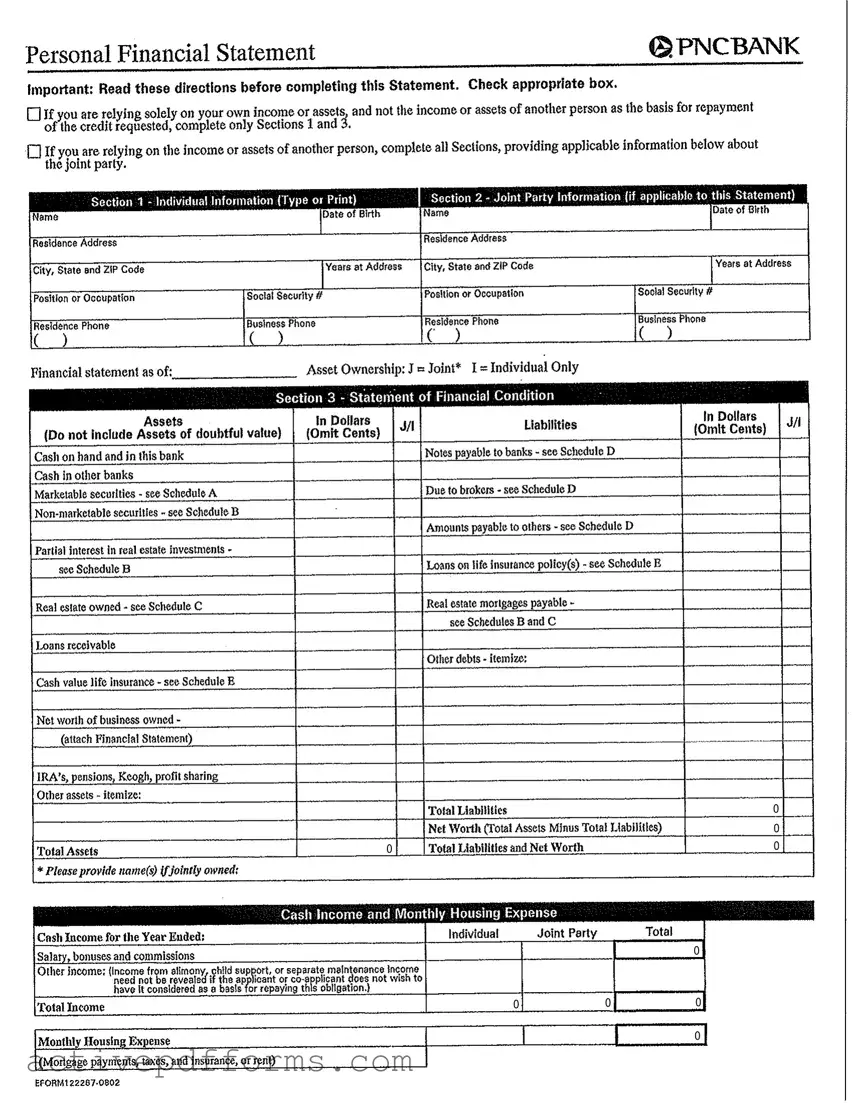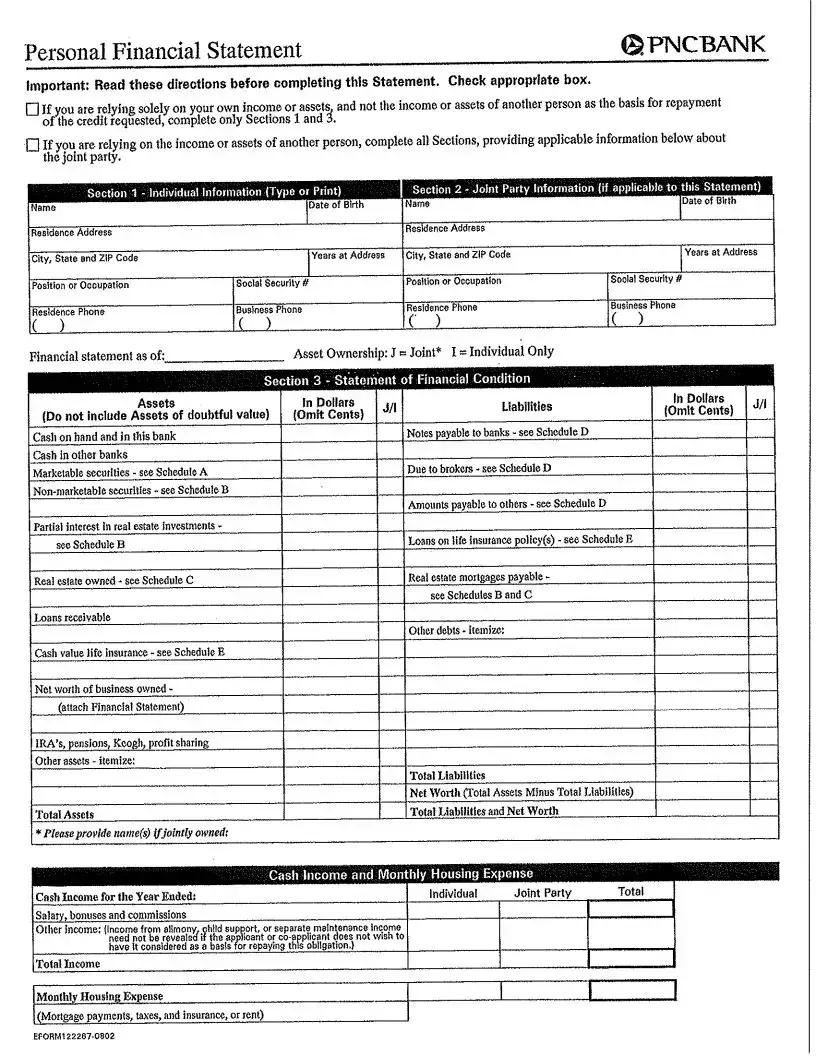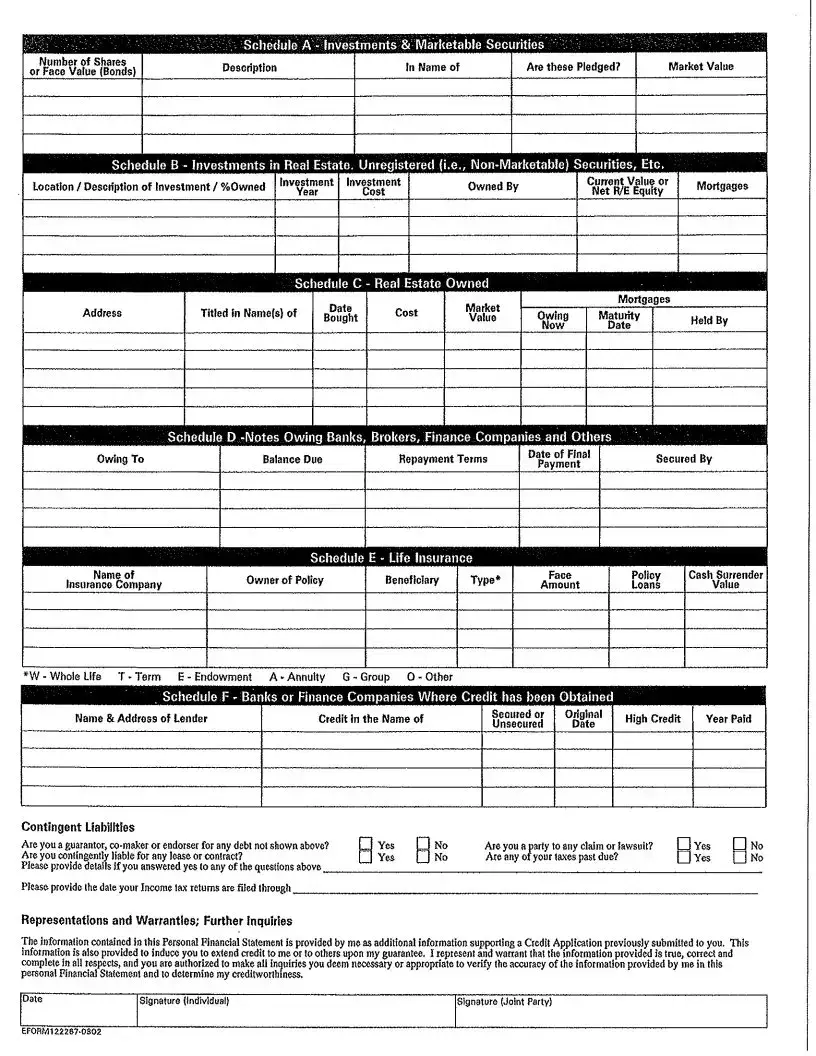When individuals embark on the journey of securing credit, the PNC Bank Statement form plays a critical role, serving as a comprehensive document that outlines their financial standing. This form, intricately designed, requires the applicant to meticulously fill out various sections that range from personal information to detailed financial conditions, including assets and liabilities. Initially, applicants are instructed to decide how they intend to qualify for the credit—based solely on their income and assets or by including those of a joint party. Sections are dedicated to collecting individual and, if applicable, joint party information, which makes this process inclusive. The document further delves into the specifics of financial health, covering cash on hand, real estate owned, marketable and non-marketable securities, among other assets, parallelly aligning these with liabilities to sketch a clear picture of net worth. Moreover, schedules attached demand intricacies about investments, real estate, loans, and life insurance, ensuring a thorough disclosure of one’s financial landscape. Besides financials, this form also opens discussions on contingent liabilities, claims, or lawsuits and tax status, making it crucial for accurately assessing an applicant’s creditworthiness. Hence, the form not only functions as a basis for credit approval but also stands as a declaration by the applicant, asserting the truthfulness and completeness of the information provided, ultimately influencing the lender’s decision to extend credit.


